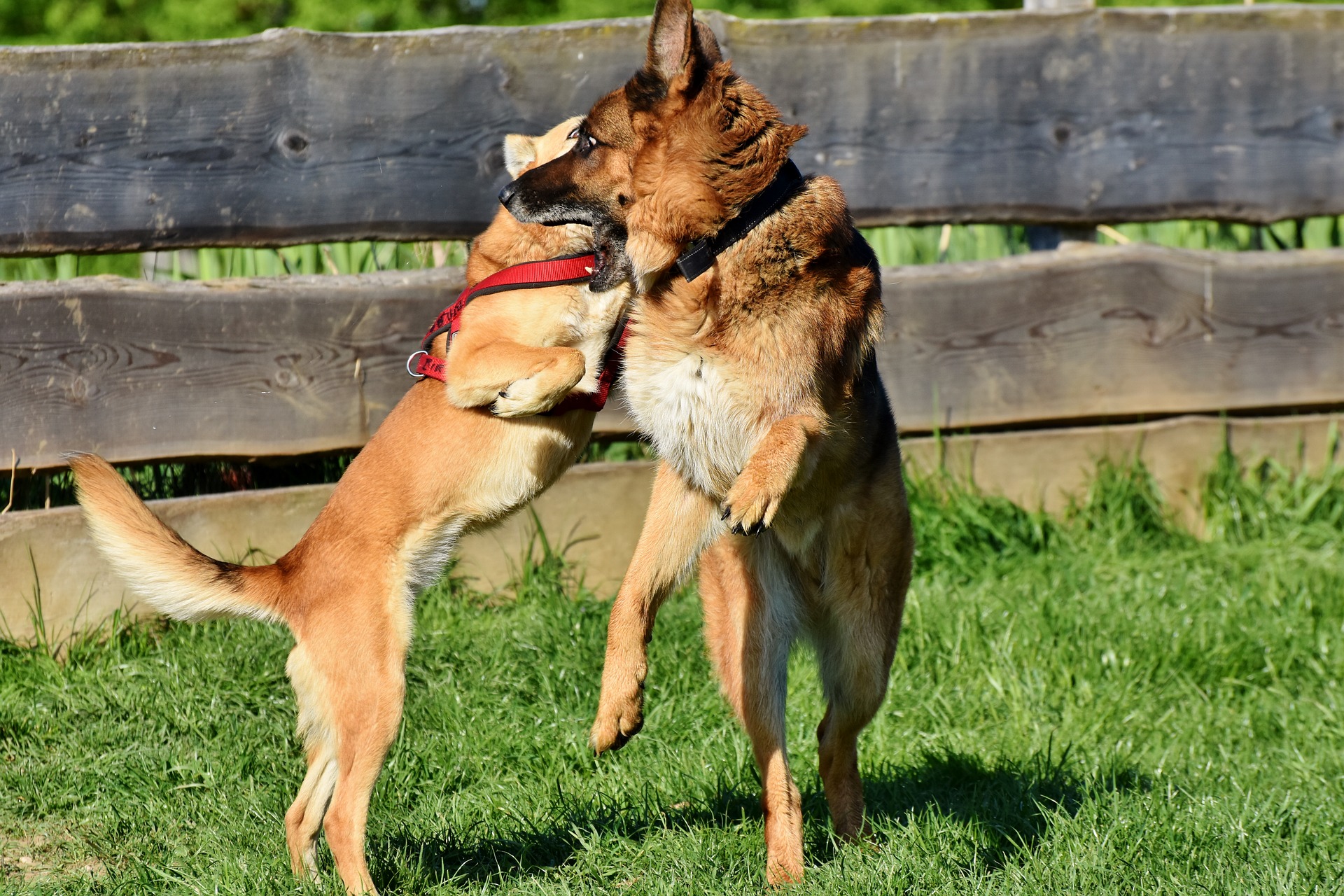You had one dog, but you decided that he needed a friend. Great idea in theory, but now they’re getting into fights! What can you do? Do you have to get rid of one of the dogs to maintain a peaceful household?
While that might be the best option in the most extreme of cases, usually aggression between dogs can be resolved when you understand what might be causing the aggression and how to deal with it. Here are some tips to help you deal with aggression between dogs in your household.
Identify and minimize stressors
If you think about it, a guy who rams another driver with his car during a road rage incident probably had other stress in his life before reaching the point of attacking a stranger. Likely, he lost his job or is going through a divorce or some other stressful life event. Being cut off during rush hour traffic was the straw that broke the camel’s back.
The same goes for our dogs. Any stress in their life will add up bit by bit until the other dog looks at them wrong and they release all of their pent-up stress on that other dog.

In one study, half of all dog pairs that got into fights had at least one dog with noticeable separation anxiety. In 30% of the pairs, at least one dog had phobias, fearfulness, or anxiety.
Addressing the underlying stressors in your dogs’ lives should help bring the level of tension down between the two dogs. A professional dog trainer can help you learn how to manage each dog’s fears and anxieties.
“Nothing in life is free”
Using this training technique can help get both of your dogs’ attention off of each other and onto you. With this technique, your dog must earn everything he gets, from his food to his toys to love and attention from you, by doing some small behavior such as sitting, lying down, staying, or performing any other behavior that you ask.
This technique helps dogs learn that everything needs to be earned. There is more order in the household because the dogs have learned that they can’t just demand what they want, whether that’s from you or the other dog.
It takes an average of 5 weeks to see a noticeable improvement in your dogs’ behavior, but a whopping 89% of dog pairs were able to reduce the amount of fighting. That’s certainly worth a try, isn’t it?
“The chosen one”
Many fights between dogs are a result of one dog trying to place themselves above the other one in the hierarchy of the household. If both dogs think they should be higher-ranking than the other, then they will feel forced to fight to determine who is the boss.
One way for you to reduce this type of fighting is for you to pick the boss. Typically, this will be the dog that came into the household first, although in the wild, the stronger, healthier dog would take the lead.
Whichever dog you pick as the leader should be treated as such. They should be fed, treated, and loved on before the other dog.
That doesn’t mean that they get MORE love than the other dog – you’re only trying to reinforce who the boss is so that they don’t feel the need to fight amongst themselves to figure it out.
Like “nothing in life is free,” it takes an average of 5 weeks to see results from this training method. 67% of the dog pairs in the study benefited from this training method.
It will take some hard work and dedication, but it is possible to reduce fights. A professional Florida dog trainer can help.




